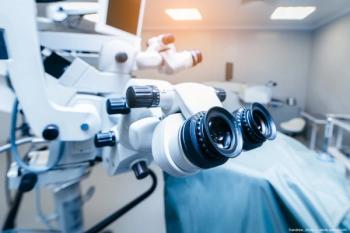
Stem cells cleared for AMD clinical trial
StemCells Inc. will begin a phase I/II clinical trial to evaluate the safety and preliminary efficacy of the company’s purified human neural stem cell product candidate (HuCNS-SC) in dry age-related macular degeneration (AMD) after having received authorization from the FDA.
Newark, CA-StemCells Inc. will begin a phase I/II clinical trial to evaluate the safety and preliminary efficacy of the company’s purified human neural stem cell product candidate (HuCNS-SC) in dry age-related macular degeneration (AMD) after having received authorization from the FDA.
The phase I/II trial will be an open-label, dose-escalation study and is expected to enroll 16 patients. The purified human neural stem cells will be administered by a single injection into the space beneath the retina. Patients’ vision will be evaluated using conventional methods of ophthalmologic assessment at predetermined intervals over 1 year. Patients will then be followed for an additional 4 years in a separate observational study.
Preclinical data submitted as part of the company’s investigational new drug application demonstrated that purified human neural stem cells protect host photoreceptors and preserve vision in a well-established animal model of retinal disease that is relevant to dry AMD. The purified human neural stem cell transplants significantly protected against the degeneration of photoreceptors, and the number of cone photoreceptors remained constant over an extended period, consistent with the sustained visual acuity and light sensitivity observed. A summary of the company’s preclinical data was published in the February issue of the European Journal of Neuroscience and is available at
“We have published the preclinical evidence demonstrating that our human neural stem cells might offer a safe, effective, and simple approach to treating AMD and other retinal diseases,” said Stephen Huhn, MD, FACS, FAAP, vice president and head of the CNS program at StemCells Inc.
“Our approach is to provide durable protection of photoreceptors, thereby preserving vision, as opposed to approaches that aim to replace photoreceptors or the retinal pigmented epithelial cells,” he said. “Furthermore, our preclinical data support our hypothesis that we can achieve clinical benefit with a single transplant in AMD patients.”
For more articles in this issue of Ophthalmology Times eReport,
Newsletter
Don’t miss out—get Ophthalmology Times updates on the latest clinical advancements and expert interviews, straight to your inbox.


















































.png)


